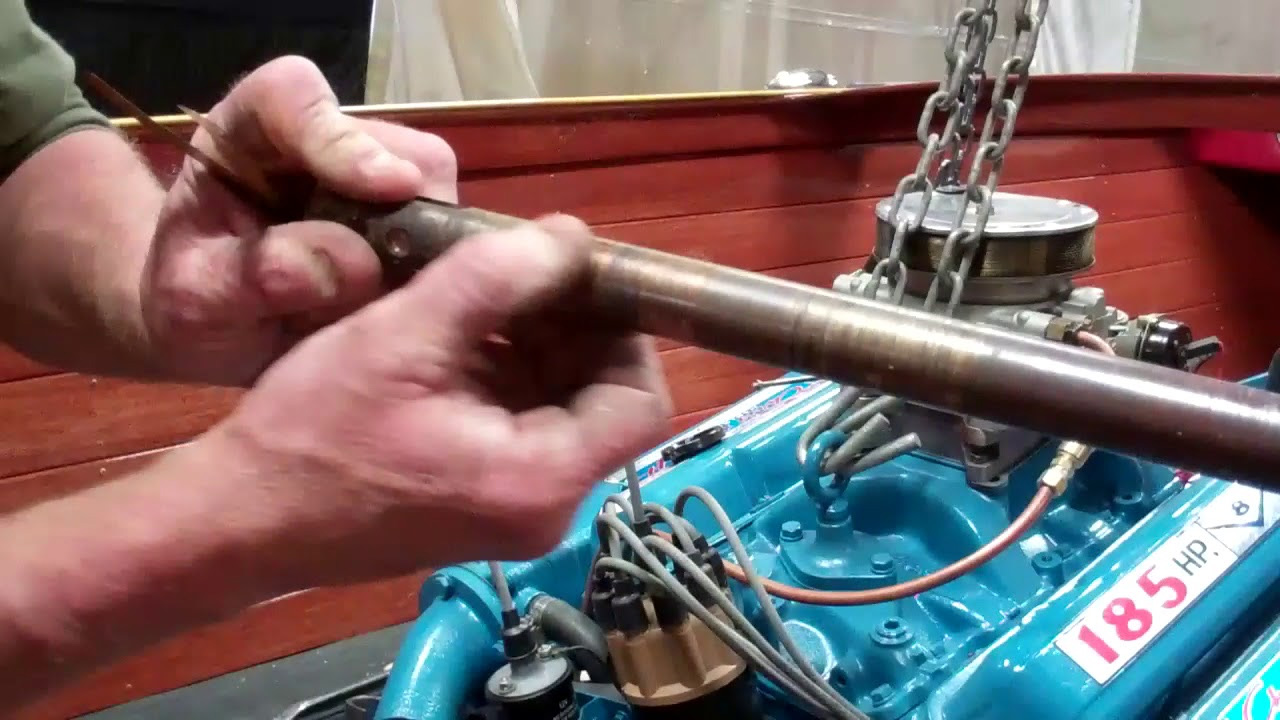Frustration dominates the shop this afternoon. Why? Whoever last stuffed this 283 into her bilge failed to align the engine and driveline properly, or even at all.
As is clearly evident in the video, we now understand why her original prop shaft was so badly scored and had actual, almost inch-wide grooves worn into it. The shaft log is worn completely out of round as well.
The shaft log can be used, but the prop shaft will be replaced with a stainless one.
You simply cannot just drop the engine onto its mounting wedges, crank down the mounting bolts and then bolt the mating faces of the transmission and prop shaft couplers together with a long ratchet handle. Yes, you can force – distort – them until they appear to mate by reefing on the coupler bolts.
But all you have really accomplished is initiating destruction of the strut bushing, the prop shaft, and the shaft log, while also visiting potentially high-wear forces onto the transmission and engine.
Once properly aligned, and before any bolting begins, alignment is a hands-only process, with the wedges being tapped this way and that, and the engine being teased laterally back and forth until it is impossible to insert a 4 mm feeler gauge between the coupler plate faces when the latter are held in place by hand.
Repeat all the way around 360 degrees while holding the plates in place. If the feeler gauge can be inserted anywhere, the engine is not properly aligned.
Spin the prop shaft and its coupler. When correctly aligned, inserting that gauge remains impossible.
That the original prop shaft was polished along the section passing through the shaft bore as well tells us the latter was bored slightly too small, so we cleaned it out using a Forstner bit on the drilling shaft John fabricated to open the bore until the prop runs without touching any wood once the engine is aligned.
Yes, alignment is a slow and at times incredibly frustrating process, but oh is executing it properly critical to achieving rated horsepower output as well as to the long run viability of your engine and driveline.
John, who spent decades building high-performance engines for mud racers, knows of what he speaks on this front.

